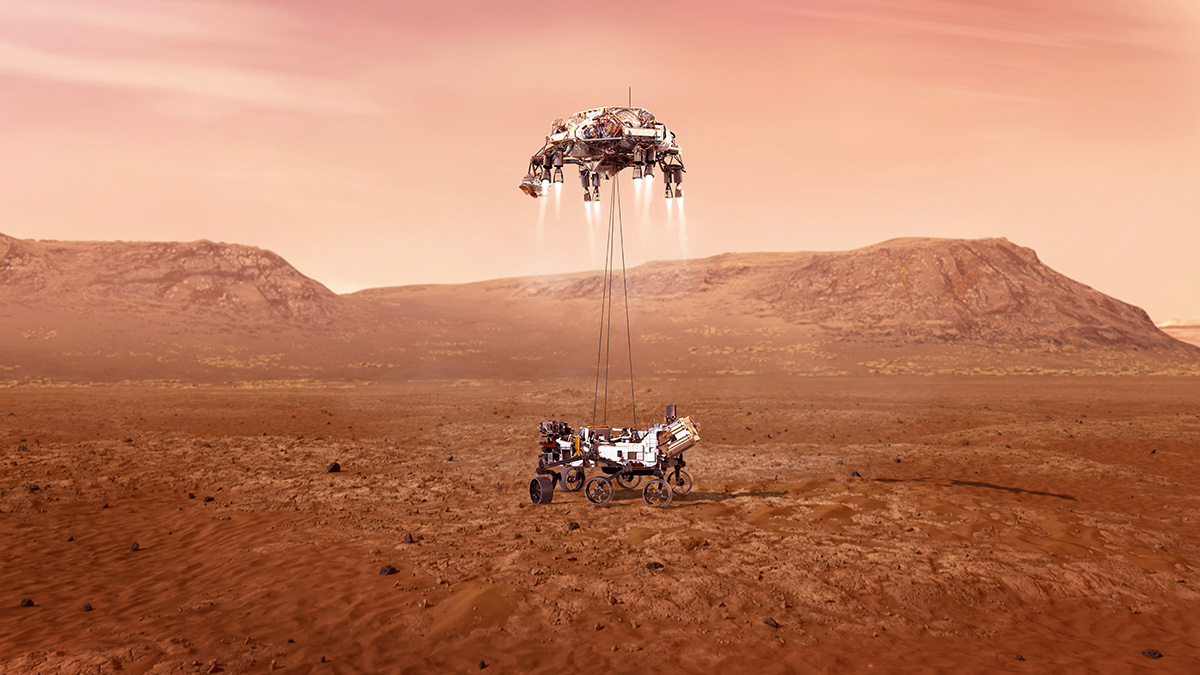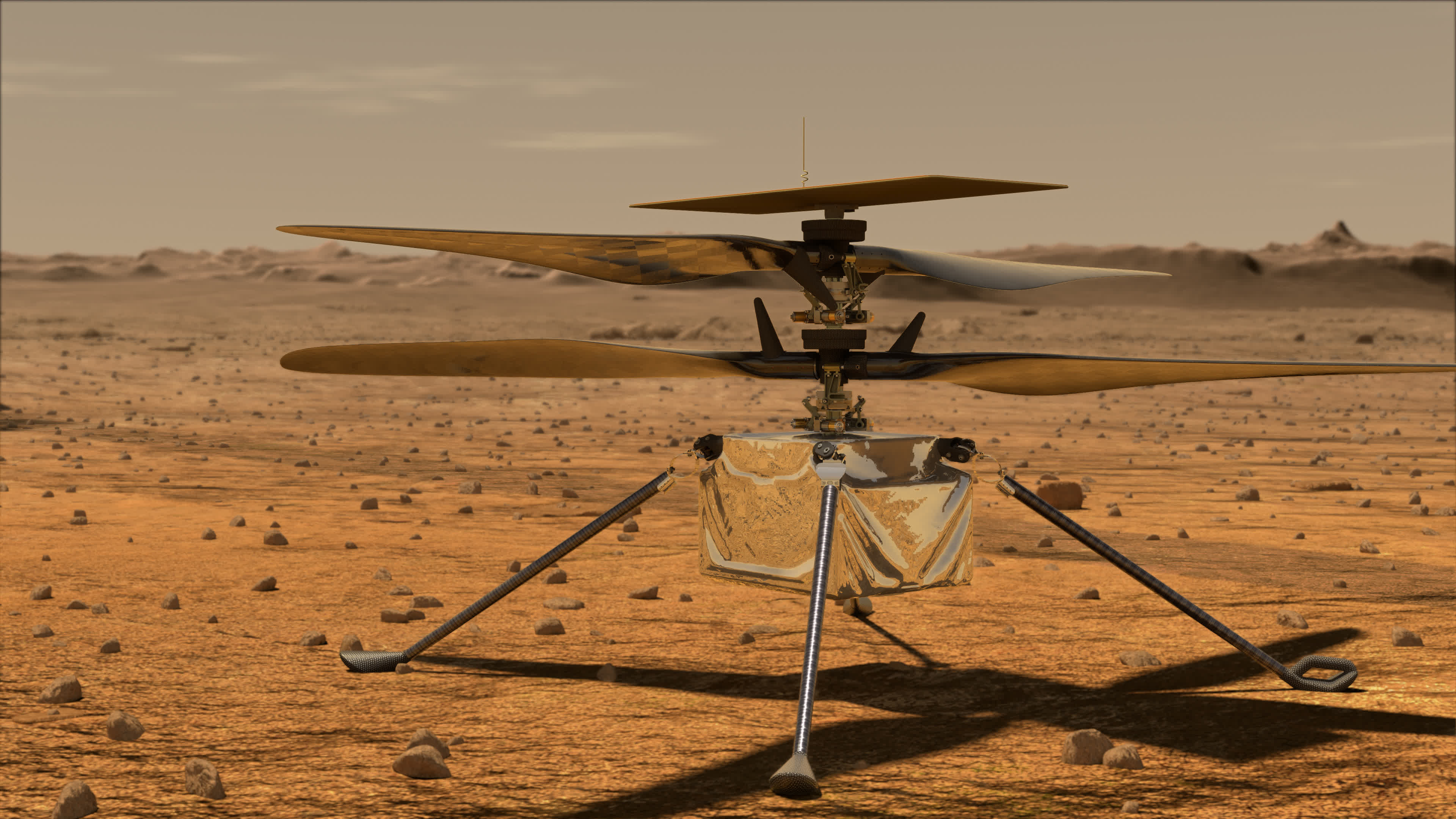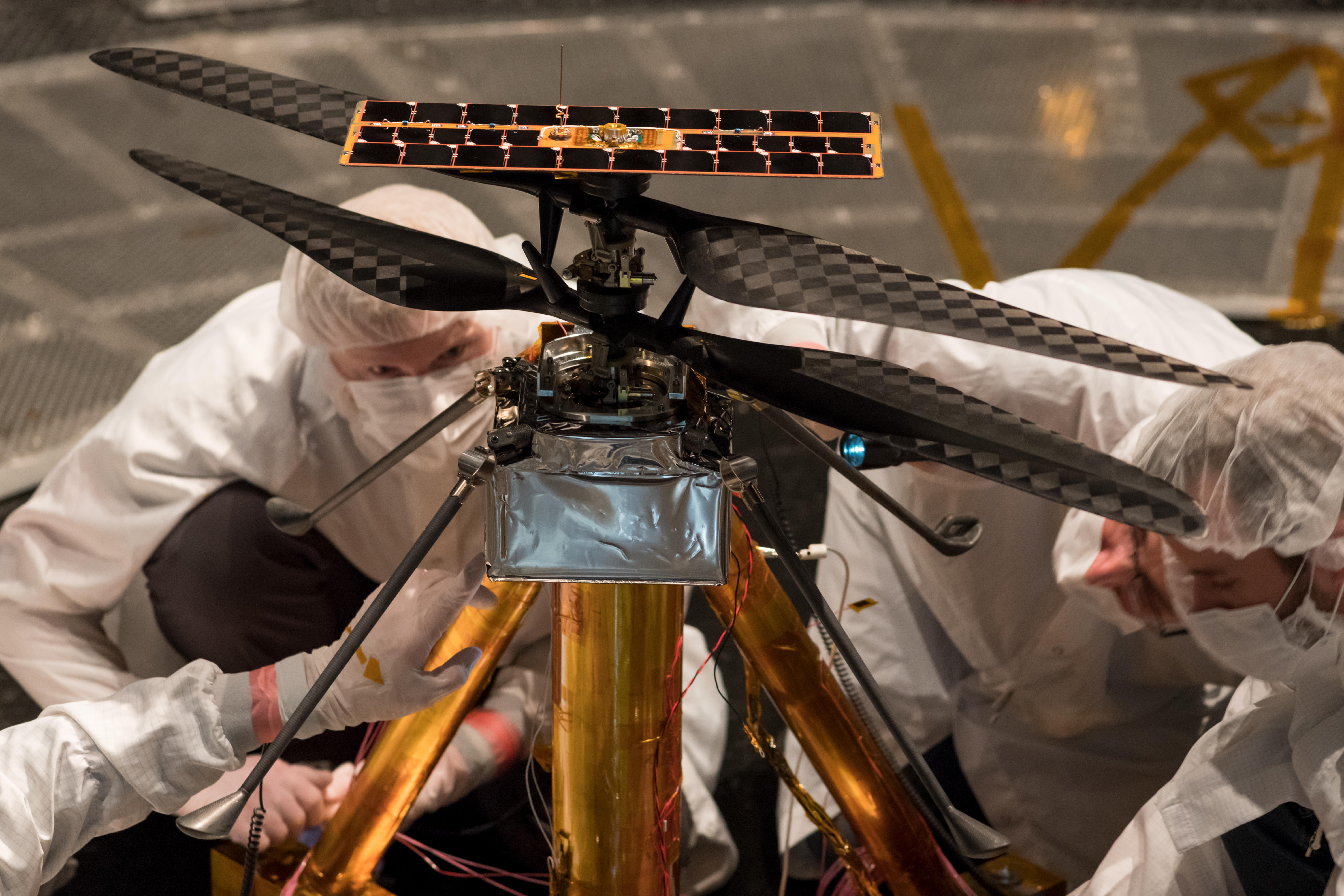
NASA’s Mars Perseverance rover acquired this image using its Left Mastcam-Z camera. Mastcam-Z is a pair of cameras located high on the rover’s mast. This image was acquired on Feb. 4, 2024 (Sol 1052) at the local mean solar time of 13:05:37. Image Credit: NASA/JPL-Caltech/ASU
NASA’s Mars helicopter, Ingenuity, has seen its last days of flight — but its friend, the Perseverance rover, hasn’t said goodbye just yet.
Originally published earlier this month by NASA, the grainy raw images of Ingenuity sitting sadly in the sand ripples of Mars’ Neretva Vallis river valley, cleaned up images of the little chopper that could were posted by German design student Simeon Schmauss on on X-formerly-Twitter and Flickr.
The enhanced displays, as Schmauss explained, were created when he pasted together six of the raw images, zoomed in on Ingenuity, and altered the image’s colors “to approximately match what the human eye would see.”









